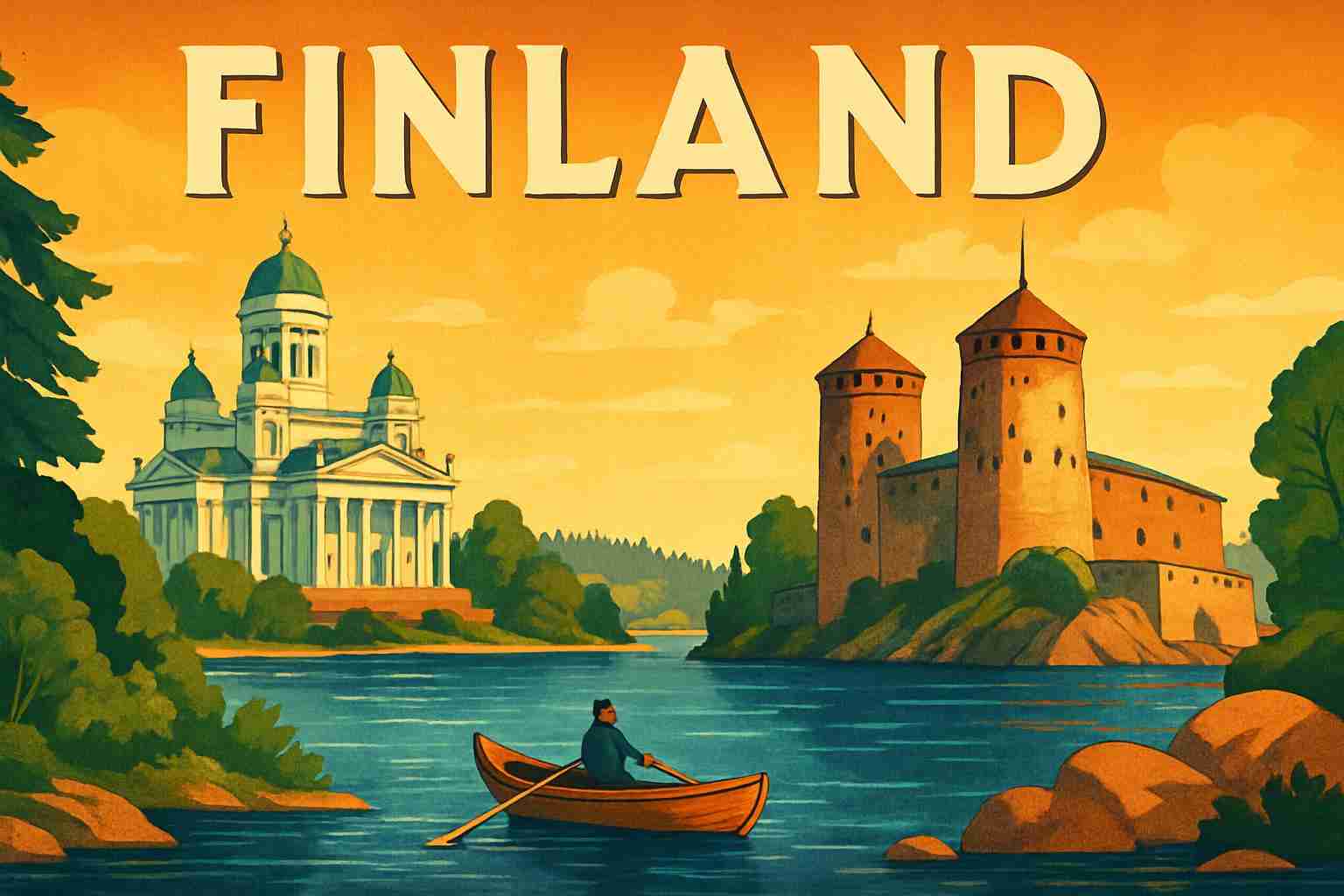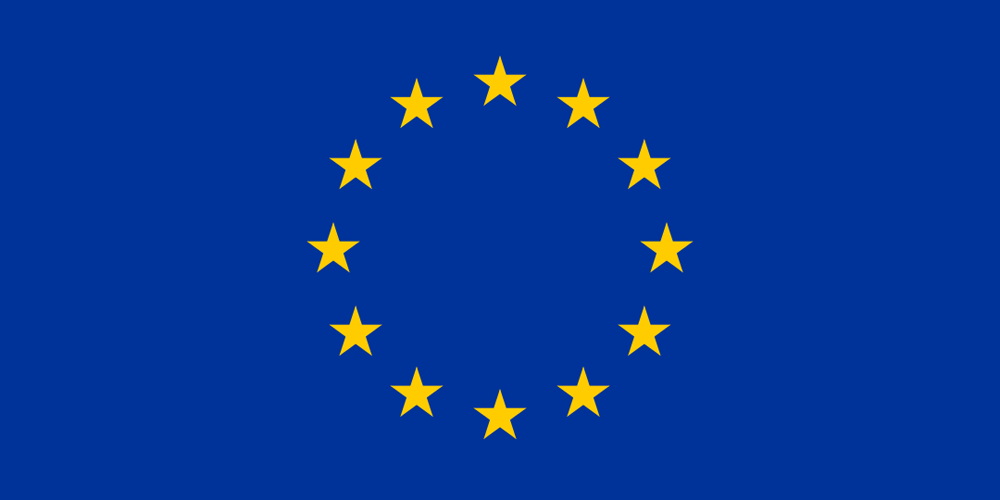Currency in Finland: EUR Send & Spend FX Guide
 Resources for Expats, Travelers and Entrepreneurs Navigating Life and Trade in Finland with the Euro.
Resources for Expats, Travelers and Entrepreneurs Navigating Life and Trade in Finland with the Euro.

What's in this Finland currency guide?
What currency is used in Finland?
The official currency of Finland (country code: FI) is the Euro, with symbol € and currency code EUR.
What is a good Euro exchange rate?
The BestExchangeRates.com currency comparison table below helps you see the total cost of your currency transaction by showing the exchange rates offered by different providers. It also makes it easy to spot potential savings from market-leading FX services compared to bank rates.
To see a full list of rates, enter your transaction type, currencies and amount then click ‘GET RATES’:
Loading rates...
|
|
|
Good things to know about the Euro
As of June 16, 2025, the Euro (EUR) has experienced notable developments affecting travelers, expats, and business owners:
- Interest Rate Adjustments: The European Central Bank (ECB) has reduced its key interest rates multiple times since April 2025, with the deposit rate now at 2%. This easing cycle aims to stimulate economic growth amid global uncertainties. (ft.com)
- Inflation Trends: Eurozone inflation has moderated, with the latest data showing a decrease to 2.4% in November 2024, bringing it closer to the ECB's 2% target. (nbcdfw.com)
- Eurozone Expansion: Bulgaria is on track to adopt the euro on January 1, 2026, following successful convergence assessments. This expansion may influence currency dynamics and economic interactions within the euro area. (en.wikipedia.org)
These developments are crucial for individuals and businesses engaged in international transactions, as they can impact exchange rates, purchasing power, and overall economic conditions.
For more EUR information check out our selection of Euro news and guides.
Frequently Asked Questions
What currency should I use in Finland?
The domestic currency in Finland is the Euro.
What is the Euro currency code and symbol?
The three letter currency code for the Euro is EUR — symbol is €.
What does the Euro look like?
Here is an example Euro banknote:

Which countries use the Euro?
It is the domestic currency in Eurozone, Aaland Islands, Andorra, Austria, Belgium, Croatia, Cyprus, Estonia, Finland, France, French Guinea, French Southern Territories, Germany, Greece, Guadeloupe, Vatican City, Ireland, Italy, Latvia, Lithuania, Luxembourg, Malta, Martinique, Mayotte, Monaco, Montenegro, Netherlands, Portugal, Reunion, Saint Barthelemy, Saint Martin, Saint Pierre and Miquelon, San Marino, Slovakia, Slovenia and Spain.
Is the Euro a closed currency?
No, the Euro is freely available and convertible. See guide: What is a closed currency?
What are equivalent amounts of USD and EUR?
Here are some popular conversion amounts for USD to EUR (US dollar to Euro)*.
*Converted at the current USDEUR interbank exchange rate. Calculate actual payout amounts for Send Money and Travel Money exchange rates.

Travel money for Finland
Using Wise for Euro travel money is a smart choice for savvy travelers. With its competitive exchange rates and low fees, Wise allows you to convert and manage multiple currencies effortlessly.
Be careful when using your own bank's Debit/Credit Card, as your bank may also charge an extra 3% as an “Overseas Transaction Charge” plus “Overseas ATM” fees for withdrawing cash on top of the standard Visa/Mastercard 2.5% from market mid-rate.
For card purchases, if you are offered a choice of currencies always select to Pay in Euro otherwise you will typically get much worst dynamic currency conversion (DCC) exchange rates.
If you really want Euro cash before departure, you can save money by ordering online. You generally get better rates and can pick up the EUR cash locally or even on travel day at the airport.
Finland: Travel Guide
Traveling to Finland requires careful financial planning to ensure a smooth and cost-effective experience. Here's a comprehensive guide to help you navigate currency considerations and manage your money effectively during your visit.

Finland is a country located in Northern Europe, known for its beautiful natural landscapes, vibrant culture and modern technology. It is a popular destination for tourists and expats alike, with its clean and safe environment, high-quality healthcare system and excellent education.
For tourists, Finland offers many natural attractions such as the iconic Northern Lights, as well as the many lakes and forests that are perfect for outdoor activities like hiking, skiing and snowmobiling. The country is also known for its distinctive culture, with traditional saunas, the famous Midsummer festival, and the Santa Claus Village in Rovaniemi.

Everyday Costs in in Finland
How much does it really cost to live, work, or travel in Finland? Here's what to expect for daily expenses and expat living.
Currency Guide for Finland (FI)
For travelers planning a week-long mid-range stay in Finland, budgeting is essential. It's advisable to bring around €800 to €1,200 for a comfortable experience while enjoying a mix of activities, dining, and local transport. To give you a clearer picture of typical expenses, here’s a snapshot in Euros (€):
- 🍽️ Meal at a local restaurant: €15-€25
- ☕ Coffee: €3-€5
- 🚍 Public transport fare: €2-€4
- 📱 Prepaid SIM card: €10-€20
- 🏨 Budget hotel or Airbnb: €70-€130 per night.
Overall, Finland is considered to be a relatively expensive destination compared to many countries. For comparison, visiting Finland can be around 20-30% more costly than in the United States, and about 10-15% pricier than the UK. Travelers will find that while Finnish prices may raise eyebrows, the country compensates with stunning natural landscapes and a high quality of life.
Expat Living in Finland
For expats, understanding the local cost of living is crucial. Typical monthly expenses in Finland can range from €1,500 to €2,500, depending on lifestyle choices such as housing and leisure activities. Rent for a one-bedroom apartment in the city center can be between €900 to €1,500, while groceries might add another €200 to €300 to your monthly budget.
When it comes to banking and card usage, Finland has a robust digital payments system, so credit and debit cards are widely accepted. It is advisable to bank with local institutions for easy access and lower ATM fees. For sending or receiving money, online transfer services like Wise or OFX may offer better exchange rates and lower fees compared to traditional banks. While exchanging cash may be convenient, it typically comes with higher transaction costs; hence, using online services or withdrawing cash directly from ATMs can result in significant savings during your stay.
USD/EUR Market Data
The below interactive chart displays the USD/EUR change and UP📈 DOWN📉 trends over the past 1 Year.

Recent Euro Market News
December 27, 2025
Key Developments Affecting the Euro (EUR):
1. Bulgaria's Eurozone Accession: Bulgaria is set to adopt the euro on January 1, 2026, becoming the 21st member of the eurozone. This move is expected to enhance economic stability and integration within the region. (en.wikipedia.org)
2. ECB's Data-Dependent Policy Approach: The European Central Bank (ECB) continues to monitor economic data closely, maintaining a flexible stance on interest rates. This approach aims to balance inflation control with economic growth, influencing the euro's valuation. (currencysolutions.com)
3. Eurozone Economic Growth Projections: The eurozone's GDP is projected to grow by 1.6% in 2026, supported by fiscal measures in Germany and increased military spending across Europe. These factors contribute to a positive economic outlook for the euro. (economic-research.bnpparibas.com)
4. Global Trade Dynamics: Elevated trade policy uncertainty and higher tariffs, particularly from the U.S., are impacting global economic growth. These factors may influence the euro's performance against other currencies. (ecb.europa.eu)
These developments are expected to play a significant role in shaping the euro's exchange rate throughout 2026.
For more EUR information read our News and guides to the Euro.
Send Money to Finland - Best Rates
To get a good (and fair) exchange rate when sending money to Finland you need to find and compare exchange rates for International Money Transfers (IMTs).
The available FX rates for sending money abroad can be very different to the mid-market (wholesale) rate which you see reported online and in the News.
You should especially compare your own bank's exchange rates to those available from Money Transfer specialists to see how much you can save - we make that calculation easy in the below table.
Get a better deal for foreign transfers to Finland
When sending money to Finland it’s important to compare your bank’s rates & fees with those we have negotiated with our partner money transfer providers. To get a better deal you should follow these 4 simple steps :
- Open an account with a BER reviewed FX provider (id docs may be required)
- You specify the local or Euro amount you want to transfer
- Make a local currency domestic transfer for the requested amount to the provider's bank account in your country
- Once your funds are received by the provider the converted EUR amount will be transfered to the recipient account you specify in Finland.
Use the above calculator to compare the exchange rates of FX specialist providers rates versus your bank's standard rates you can hopefully save around 5% and maybe more - end result is more Euro deposited into the recipient bank account and less margins and fees kept by the banks!

Managing money while living and working in Finland
Managing your money effectively while living and working abroad can be challenging, but there are several steps you can take to ensure that your finances are in order.
Understand Euro currency exchange rates: Exchange rates can have a big impact on your finances, so it is important to keep an eye on the EUR exchange rate and consider using a money transfer specialist or a credit card that does not charge foreign transaction fees to get the best exchange rate.
Use a local Euro bank account: A local EUR bank account can make it easier for you to manage your finances and pay bills while you are in Finland. It may also be more convenient to use a local EUR bank account to make purchases and withdraw cash.
Research local laws and regulations: It is important to understand the local laws and regulations that apply to financial transactions in Finland. This can help you avoid legal issues and ensure that you are complying with local requirements.
Consider the tax implications: It is important to understand the tax implications of living or doing business in Finland. This can help you plan your finances and ensure that you are paying the correct amount of tax.
Seek financial advice: If you are unsure of how to manage your finances in Finland, it is a good idea to seek the advice of a financial professional who is familiar with the local financial system. This can help you make informed decisions and avoid financial pitfalls.
We have put together some key points to help managing your money effectively, you can reduce financial stress and enjoy your experience living or doing business in Finland.

What's the expat life like in Finland
Expats can find a good quality of life in Finland, with a high standard of living and a stable economy. The country is known for its progressive social policies, such as its universal healthcare system, and for its excellent education system. The Finnish society is also very multicultural, and expats can easily find communities of other foreigners. However, it's important to note that the official language is Finnish, and a good knowledge of it would be beneficial for finding a job or moving around.
Finland is a relatively safe country, with low crime rates and a stable political situation. However, the climate can be harsh in the winter, with long periods of darkness and cold temperatures. It's important to be prepared for the weather conditions before planning a trip or moving to Finland.
It's always important to do a research and seek for professional advices before planning a trip or moving to Finland.
